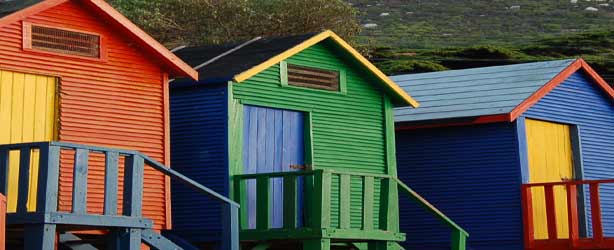200+ vendors, 13 workshops, free safe parking and more
Gondwana Game Reserve releases additional 200 head of Game
Gondwana Game Reserve will be one of the first natural Big Five safari destinations in the Western Cape
Conservation efforts throughout the country to rehabilitate land to its original state and introduce animals that were indigenous to that land are evident throughout regions such as KwaZulu-Natal and the Eastern Cape, but few successful attempts have been made in the Western Cape.
Gondwana Game Reserve will be one of the first natural Big Five safari destinations in the Western Cape based on the size and carrying capacity of the reserve allowing for free ranging predators.
More than 200 head of game was released in the last month culminating with 60 Gemsbok and 20 Wildebeest released last week.
In total, 60 Black Wildebeest, 53 Red Hartebeest, 38 Eland and 60 Gemsbok have been released since June. All the game came from the North West Province and was caught and released directly onto Gondwana within 24 hours.
The gemsbok were transported with rubber tubes on their horns for their own safety, as their horns are extremely sharp and dangerous and gemsbok tend to be more aggressive.
The pipes are cut and loosened prior to release from the truck and will fall off in due course. The Gemsbok should utilise the more arid areas on the game reserve.
They are primarily roughage feeders and are able to digest a diet high in fibre. 75% of the gemsbok's diet consists of grasses and forbs, but may include 25% browse and fruits.
The Gemsbok can occur in herds of 10 to 30 and form nursery herds of 3 to 4 cows with their young.
The Red Hartebeest are also primarily grazers, but will forage on fruit and browse material. It is the first animal to lose condition if the veld deteriorates, and are thus a good bio indicator.
They are also a social animal found in large herds. Both the Gemsbok and Red Hartebeest are capable of surviving for long periods without water.
The Eland is the largest of the spiral horned antelope. They are mainly browsers but will utilise grazing material when the grass is green and has high levels of protein.
They are gregarious but shy animals and usually occur in small herds. The Eland bulls form bachelor herds in non-breading season, but join mixed herds in mating season. They are non-territorial and should occupy the whole reserve.
The Black Wildebeest, also commonly known as the White Tailed Gnu, came from the Eastern Cape, as did the Cape Mountain Zebra.
Both species underwent a 'hard release' which means they were let go directly from the truck onto the Gondwana Game Reserve and were not kept in a boma or holding enclosure setup on either property.
They were caught, loaded, driven 550km and released all within seven hours reducing stress levels on the animals.
It is estimated that Gondwana Game Reserve will be able to sustain a total of 120 Black Wildebeest, of which 75 will be introduced this year.
Black Wildebeest naturally have a high reproductive rate and they should play a large role as a prey base for the lions anticipated to be released in the beginning of 2008.
The first lodge at Gondwana will be called Fynbos Camp and is expected to open in 2008. Luxury accommodation will consist of 25 superior rooms and 10 deluxe suites overlooking two waterholes and the Outeniqua Mountains.
Subscribe to our Editor’s picks Newsletter for more information on the opening of Gondwana Game Reserve , or find other Game Reserves in the Western Cape, on the Garden Route or Eastern Cape.









